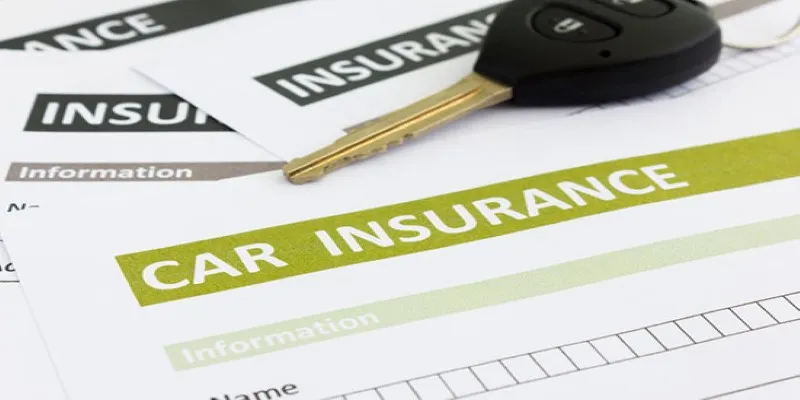A Guide to Adding Your Child to Your Car Insurance Policy Easily
Auto insurance is mandated by law for all drivers, regardless of age. Both adults with full licenses and teenagers with temporary licenses fall under this category. Parental signatures are required for children since they are too young to sign their insurance contracts. There are two primary methods for teens to get insurance:
- Parents adding a child to the car insurance family policy
- Parents getting children their own policy
While you could get your child their own car insurance policy, many find it easier and more cost-effective to add them to the family coverage. Read on to learn when your child should get their own car insurance and how to minimize your expenses during this major life transition.
Cost of Including a Child in Auto Insurance
Adding a child to car insurance costs, on average, $2,718 annually. Conversely, a $5,108 yearly premium would be required if your youngster obtained their own insurance. In addition to being 47% more costly, getting your child their own auto insurance coverage can be challenging.
In all places, regulations prohibit children from entering into formal contracts, so you will have to co-sign the insurance. Nationwide offers the least expensive auto insurance for adding drivers of almost any age. In contrast, GEICO provides the best rates if you’re adding an 18-year-old.
Steps to Add Your Child to Your Car Insurance

When taking these steps, financial advisors often answer questions about when your child should get their own car insurance. Be aware of the process and its implications before signing the contract.
Review Your Current Coverage
Adding your adolescent to the family auto insurance policy is relatively simple. Before making any changes, review the terms of your existing policy. This might help you determine if you need more coverage when adding a child to car insurance. You will need the following information:
- Date of birth
- Full legal name
- Driver’s license details
Contact Your Insurance Company
Inform your insurance company that you are adding a new driver. Provide the necessary driver’s license number and your child’s details. Also, inquire about any possible discounts, such as those awarded for completing driver education classes or earning high grades.
Choose the Right Car
Inform your insurance company what kind of car your youngster plans to drive most of the time. To save money on insurance, look into affordable automobiles that may be insured for teenagers. Be ready with the vehicle identification number (VIN) and other pertinent information if your child drives a personal vehicle.
Explore Coverage Options
Discuss available coverage options with your insurer. Consider your child’s driving behavior and the type of automobile. While ensuring your adolescent driver has enough coverage, adjusting the deductible may help keep premium costs in check.
Request a Quote
See how adding a child will impact your rate by requesting an insurance quote. Reviewing the quote allows you to identify any increases and make the necessary adjustments to stay within your budget.
Adjust Policy if Necessary
Discuss ways to save money if the insurance price increases significantly. For example, you could adjust the amount of coverage or ask about additional discounts to find a safe and affordable balance.
Receive Updated Documents
Your insurance provider will issue revised insurance cards and policy documents after any modifications. Ensure they have completed adding a child to car insurance in the updated information.
Review Annually
Once your child gains more driving experience, review your policy annually. Insurance premiums may drop as they become more skilled, so ensure your coverage and pricing needs are met.
Benefits of Adding a Child to Your Car Insurance Policy

Adding a child to your policy will likely increase your premiums. However, there are significant benefits to adding your child as a driver, such as:
Steady Coverage
Your child’s insurance history is established with continuous coverage, paving the way for future premium reductions. While adding a child may increase your premiums, it’s generally less expensive than obtaining separate coverage, especially for young drivers.
Lower Premiums for Your Child
If your teenager is eighteen years old or older, they may get an insurance policy under their name (if they own, rent, or finance a vehicle of their own). However, individual auto insurance for eighteen-year-olds is often pricey. They’ll likely save by staying on your policy if your adolescent lives with you and your name is also on their car.
Qualifying for New Discounts
Teen drivers can save on vehicle insurance by meeting new discount standards. Discounts for outstanding students, remote students, and participation in adolescent driving programs can help cover your young driver’s insurance costs. A single policy for the entire family makes it easier to manage, adjust, and pay for insurance.
How to Get a Deal on Teen Car Insurance
When looking to add your child to your family insurance, be aware of exclusive discounts you can take advantage of. Some basic go-to discounts include:
- Bundling discounts: Save when combining vehicle and home or renter’s insurance policies. Some companies offer discounts for doing so.
- Defensive driving discounts: Insurance discounts may be available for teenagers who complete a defensive driving course.
- Good driver discounts: Adults and young drivers with perfect records are eligible for good driver discounts.
- Good student discounts: If your adolescent driver has a GPA of 3.0 or above, you may receive a 7% reduction in auto insurance.
- Multi-car discounts: Parents who insure each family member’s vehicle with the same company often save on auto insurance.
- Student away discounts: Adding a child to car insurance can also provide students who qualify for “Away” discounts a 10% reduction if they leave the vehicle at home to attend college.





